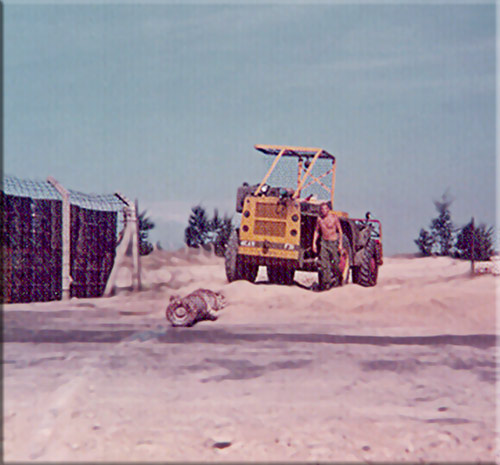
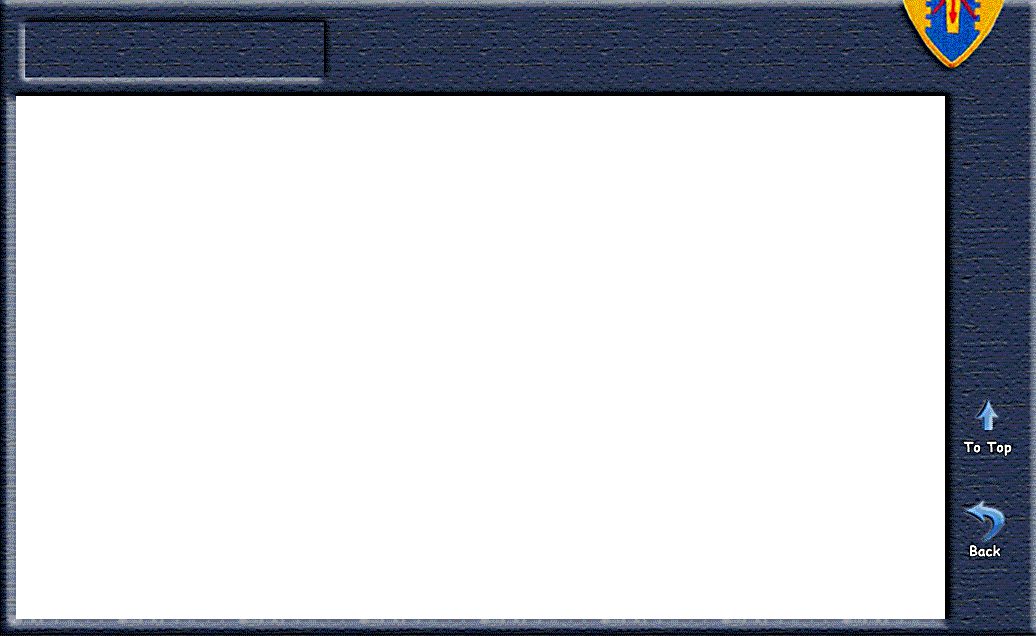
The Ancient Tan My Cannons - 1972
Mike Woods, Michael Peake, John Spencer, Brian "Stretch" Harrison & Wayne Moose
.....................................................................................................................................................................................
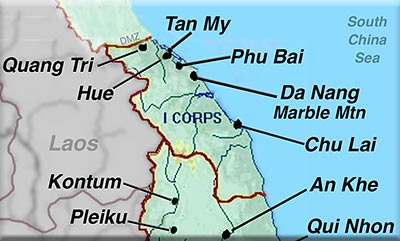
Mike Woods: Recovering an ancient cannon was an extra activity that Ken Mick and I had discussed by telephone. We kept seeing this object in the Bay after our move to Tan My Island. We got a UH-1H to pull it out of the bay. It was quite a struggle but it was a success. The UH-1H lowered it at our base and that is the last I can recall. It is probably still sitting there.
Michael Peake: Here is a photo of dragging out a spiked 19th or 18th Century cannon. Possibly 12-pounder.
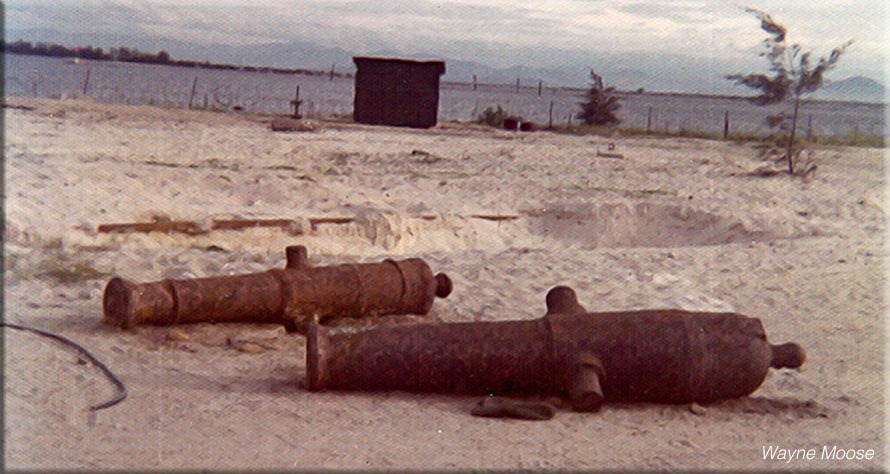
John Spencer: At Tan My, our refueling point was across the bay and on the mainland just outside the wire of the U.S. Coast Guard LORAN station.
After refueling each day we would cross over a strip of water to our Airfield. Close to the mainland shore was the remains of a British Man of War ship. Back in the 1800s the Brits sent their warships all over the world looking for French ships to destroy. Whether the wrecked British warship had been driven to shore by a storm or chased and destroyed by a French warship I don’t know. Near the wreck were several cannons from the ship.
After a mission one day and before refueling I discussed trying to recover a couple of the cannons with the crew. We all agreed we should try but knew the UH-1H model would not lift it with a full crew. So we flew to the strip and dropped off everyone but Steve Webb, Crew Chief, and myself.
The two of if us went back to the mainland at low tide to try the recovery. I landed right at the waters edge and Steve jumped out with a rope we had borrowed from the Coast Guard. He waded out to the smaller cannon and tied the rope around the cannon. I then picked up the cannon and flew it over to the airstrip. I then returned and had Steve tie the rope around the larger cannon. I then tried to pick the cannon up but the engine was about to be overtorked. I set back down and had Steve move to rope a little forward of balance point. I then was able to get the 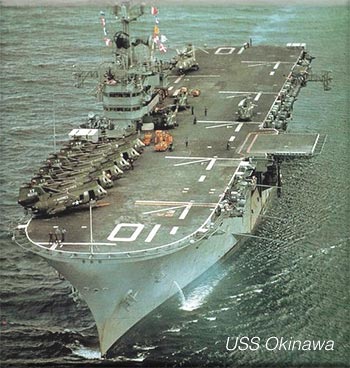 front part of the cannon up out of the water and began to move the Huey forward until I had the cannon planing in the water. The bird went through translation and we lifted off. I flew it over to the strip and dropped it off.
front part of the cannon up out of the water and began to move the Huey forward until I had the cannon planing in the water. The bird went through translation and we lifted off. I flew it over to the strip and dropped it off.
We then moved the cannons inside the compound using our forklift so they could be worked on and then be displayed.
Several weeks later after surgeons on the Aircraft Carrier Okinawa operated on and saved our 1SGs life I donated the cannon to the carrier. They sent a Sea Horse helo over to pick them up. I figured they had all the machinery and tools to restore them.
As far as I know those cannon are in the Naval Museum at Navy Norfolk.
Brian "Stretch" Harrison: At Tan My right off the inlet end of the runway on some days you could look down and see part of the the outline of a wooden ship with cannon close to shore in shallow water (my guess is the ship originally burned to the water line, there was no wood sticking up)
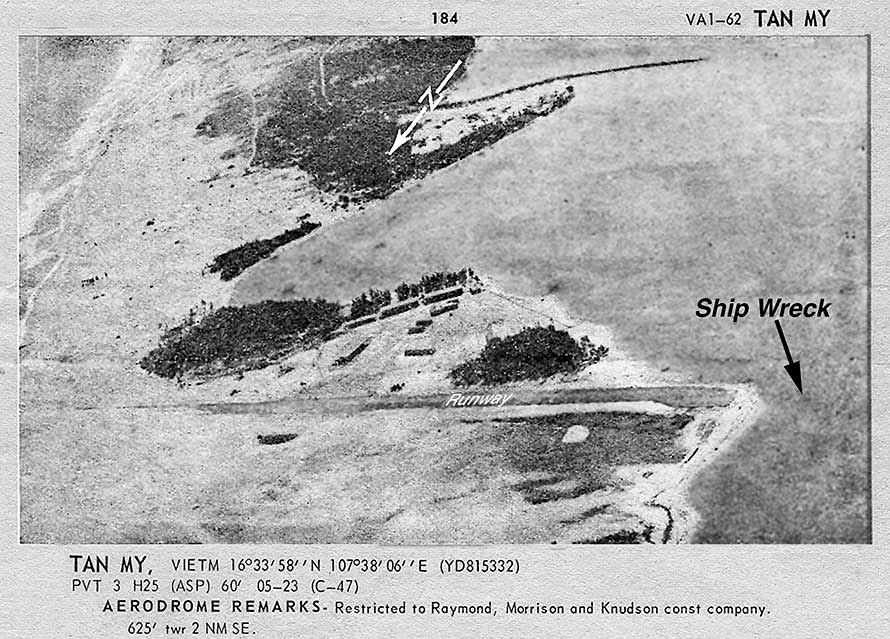
I was in F/4 from early Nov’72 through stand-down in early Feb ’73. When Wayne Moose and I left there were still two cannon in the company area. A cannon ball could be seen in one of the barrels. The cannon were iron, not bronze and the only markings I remember seeing was a crown and date on one of them. No British "Broad Arrow" symbol or French "Fleur-de-leis" that I saw and no fancy “engravings” such as sometimes found on bronze cannon of that period.
Wayne Moose read on the web somewhere that the cannons had been purchased by the University of Hue (Tan My is close to Hue), but I’ve never been able to find that article....Stretch
